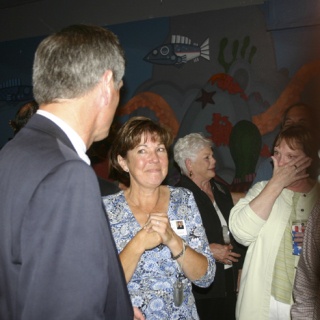The Washington Secretary of State’s office issued this FYI on the Top 2 primary, which got its first test on Tuesday.
ALL ONE PARTY PREFERENCE:
Under the provisions of the voter-approved Top 2 Primary, no party “owns” a slot on the November ballot and it is always possible that voters will send forward to the General Election two candidates who express the same party preference.
There were no examples of this among the eight partisan statewide executive offices this week, but some legislative and local government contests will offer such matchups in November.
For the first time, eight legislative finals apparently will feature finalists who prefer the same party — two Senate seats and six House races, based on partial and unofficial returns. This is eight out of 124 seats on the ballot this fall (26 Senate, 98 House).
In some cases, that’s because the only candidates who filed listed the same party preference. These include the Senate seats now held by Margarita Prentice in the 11th District and Karen Fraser in the 22nd. Both filed as “prefers Democratic Party” and will be challenged by fellow “prefers Democratic Party” candidates — either Juan Martinez or Scott McKay against Prentice, and Erik Lee against Fraser.
In Districts 7 and 8, only “prefers Republican” or “prefers GOP” candidates filed and the Top 2 will face off in November. In the 12th, Rep. Mike Armstrong, who prefers Republican, faces a “prefers Republican” write-in candidate, Courtney Cox.
In the 27th, Rep. Dennis Flannigan and Jessica Smeall, both “prefers Democratic Party,” advance. In the 36th District race to succeed the dean of the Legislature, Rep. Helen Sommers, both finalists prefer the Democratic Party, John Burbank and Reuven Carlyle. And in the open race in the 46th District, the top vote-getters both prefer the Democratic Party, Scott White and Gerry Pollet.
FINALISTS OTHER THAN PREFERS D OR R:
In the 3rd District state Senate race, Majority Leader Lisa Brown, who prefers Democratic, will be opposed by John Moyna, who states no party preference. In the 37th District, Rep. Eric Pettigrew, who prefers Democratic, is challenged by Ruth Bennett, who prefers Libertarian. In the 38th, Rep. John McCoy, prefers Democratic, is opposed by Cris Larson, who states no party preference.
Speaker Pro Tem Jeff Morris, who prefers Democratic, is challenged in the 40th District by Howard Pellett, who prefers Green; and in the 49th, Rep. Jim Moeller, who prefers Democratic, faces Mike Boman, who prefers Independent.
UNUSUAL PARTY MONIKERS:
Before filing week opened, Secretary of State Sam Reed urged candidates to “play it straight” and not list a preference for made-up or quirky names. Some of those who didn’t take his advice didn’t survive the primary.
Example: Candidates of the Salmon Yoga Party and the True Democratic Party didn’t move forward, and neither did hopefuls from startup parties called America’s Third Party and the Party of Commons. Some did move forward through, including candidates who said they prefer the Cut Taxes GOP Party and the Progressive Dem Party.
One well-known Republican leader, Curt Fackler, ran for state insurance commission without a party preference label and lost a runoff spot to someone who touted the Republican brand, albeit with the historical-sounding name of John Adams.
BY THE NUMBERS:
In this year’s primary, there were a total of 288 candidate races throughout the state: congressional, 9; statewide executive, 9; legislative, 124; state Supreme Court, 3; Court of Appeals, 7; multi-county Superior Court, 7; single-county Superior Court, 52; county commissioners, county PUD commissioners and other county races, 77.
WHAT WAS THE TURNOUT?:
The number is hard to project because so many ballots still are in transit and counties continue to process ballots, including some from military and overseas voters.
As of Thursday, more than 930,000 ballots had been counted, or 27.3 percent of the 3.42 million registered voters who were sent mail ballots or, in King and Pierce counties, allowed to vote at polling places.
Counties have estimated they have well over 300,000 ballots in hand or expected — and this number does not include populous Pierce County, which did not submit an estimate. Counties have until Sept. 3 to certify their returns and the state will certify the election by Sept. 9.
The turnout still could exceed 40 percent, a fairly average turnout. Before the election, Reed’s office predicted a 46 percent turnout, based largely on the wide use of convenient mail-in ballots, the popularity of the wide-open Top 2 system, and the heavy advertising and voter interest in the close races for president and governor. Some counties later downgraded their initial predictions, based on lighter-than-expected return of ballots.
NEXT UP:
Deadline for mail-in or online voter registration or updates for the general election is Oct. 4.
Deadline for in-person new registrations is Oct. 20.
General election ballots for overseas and military voters must go in the mail by Oct. 5 and must be available in-person for other voters by Oct. 15. Ballots for most voters will be mailed by Oct. 17 and many voters will get them over that weekend or on Monday, Oct. 20. Election Day is Nov. 4.
For more information, visit www.vote.wa.gov.




